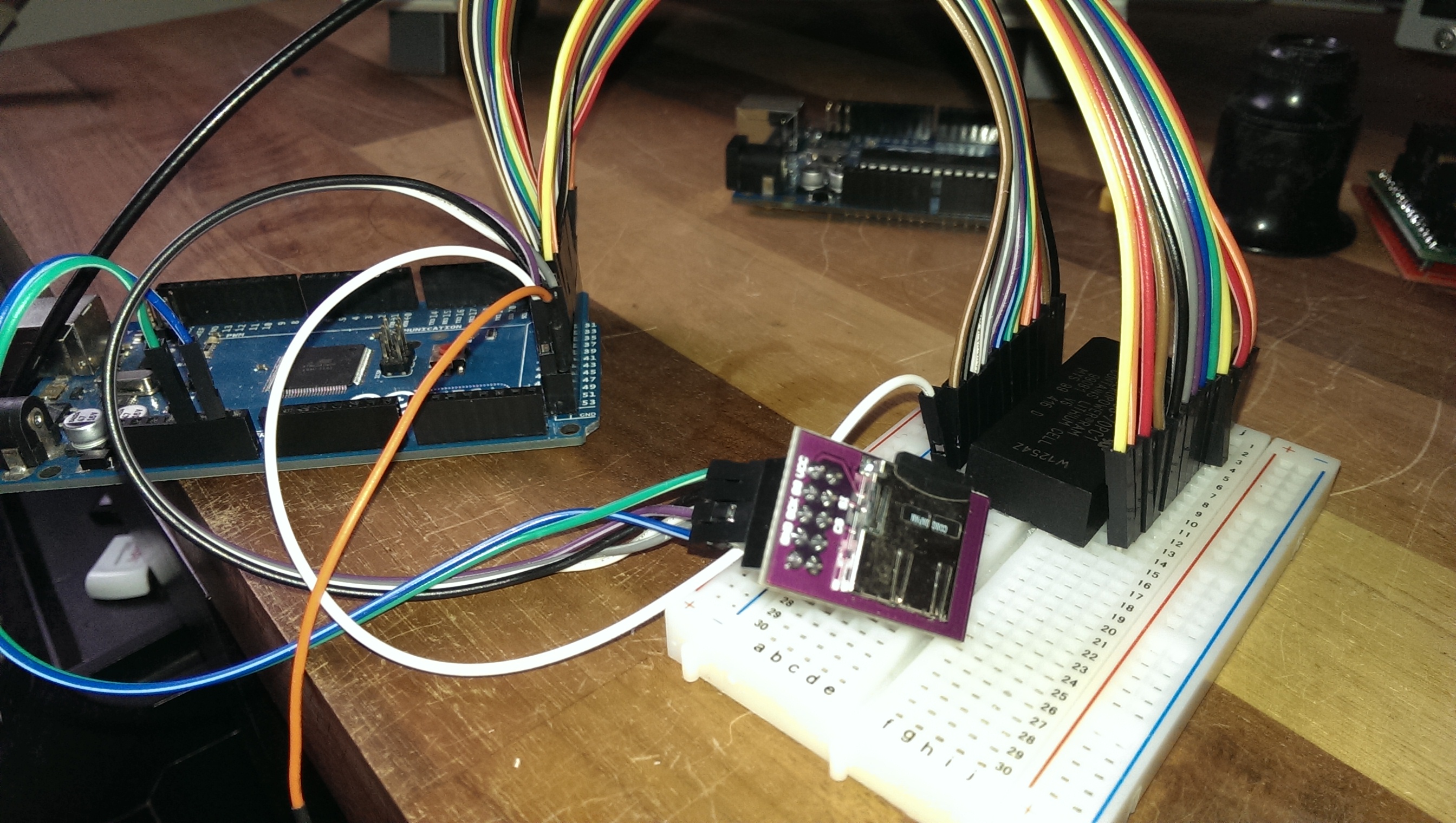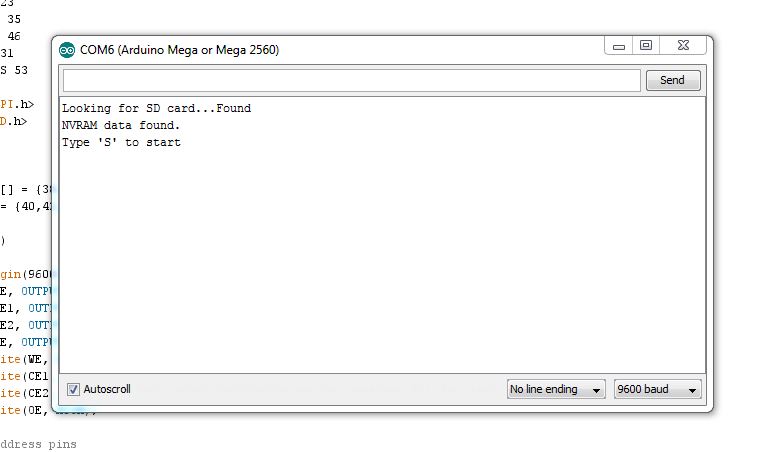Layer has recreated and tested the TK63B PAL from Dynasty Wars.
Thanks go to Layer for this.
Layer has recreated and tested the TK63B PAL from Dynasty Wars.
Thanks go to Layer for this.
Coolmod dumped and submitted PLD dumps from his Jaleco Mega32 motherboard.
These devices were unlocked PEEL devices and are not converted for use in a GAL device or similar.
Thanks to Coolmod for these.
There is a lot of people out there that need to program a Timekeeper RAM but don’t have the necessary hardware to do so.
Silent Scope 1 & 2 both use one of these and if it dies will display the infamous 11P error.
Recently I decided it would be good to write an Arduino program to do this job.
I have only tested this on an M48Z58Y chip which is almost identical to the M48T58Y only the later has an extra CE (active HIGH) line.
While this worked well for me on the former, it may have issues that need addressed. I have also NOT tested this in any Silent Scope hardware. While the correct data was programmed I have no idea if Silent Scope requires any of the extended functions the Timekeeper RAM offers.
To put it bluntly, this may or may not work for you. If it doesn’t then I have no real way of testing how to make it work with the hardware.
Its a pretty rough program and it is more of a proof of concept than a finished product. Hopefully it will be a starting point for someone to finish or rewrite it.

The basic setup requires:
-Arduino MEGA 2560
-SD card breakout board
-Timekeeper RAM
-A valid NVRAM dump (named as “nvram.bin” in the root directory of the SD card)
I Wired up the connections as follows:
ARDUINO -> Timekeeper
38 -> A0
36 -> A1
34 -> A2
32 -> A3
30 -> A4
28 -> A5
26 -> A6
24 -> A7
25 -> A8
27 -> A9
33 -> A10
29 -> A11
22 -> A11
40 -> D0
42 -> D1
44 -> D2
45 -> D3
43 -> D4
41 -> D5
39 -> D6
37 -> D7
23 -> /WE
35 -> /CE1
46 -> CE2
31 -> /OE
The SD card was wired as follows:
53 -> CS
52 -> SCK
51 -> SI
50 -> SO
Don’t forget to wire up you VCC and GND for both of these too.
All these pin assignments can easily be changed in the program if you wish.
Once the ‘sketch’ has been loaded up from the IDE if you open the terminal window (9600 baud) and everything is configured correctly you should see the following text.

Send an upper case S and a few seconds later it will hopefully have finished and the chip should be programmed.
The ‘sketch’ can be found in the Arduino download section.
This was a quick fix .
Whilst testing the stereo sound of one of my CPS2 games I noticed the monitor display went blank all of a sudden. I thought there was a problem with the RGB connector but this was not to be the case.
I wasn’t getting a signal through the RGB connector or through composite on the back. Power led was on and neck glow was present so that was a good sign.
I opened up the monitor and discharged the tube using a flat-head screwdriver, a heavy gauge wire with two alligator clips on each end is also required.
Warning: Please don’t attempt to discharge a CRT unless you know what you’re doing!
See the following video from John’s Arcade for info on safely discharging CRT monitors.
Once discharged first thing I checked were the switches on the back of the monitor which gives the 1084 its various operating modes. Switches which handle those were fine & were set correctly. I recently re-flowed the solder to the connectors on the back which are notorious for creating intermittent problems.
I then began an inspection inside of the chassis, I was looking for bad capacitors in particular. I immediately spotted 1 really bad looking electrolytic that has seen better days.
I had a spare Panasonic/Matsushita 50v 4.7mf capacitor in my parts bin which I happily replaced the bad one with. This seems to have done the trick and my display is back again.
A few other caps are budging slightly at their tops but I don’t have the right values yet.
In the near future I am going to recap the entire chassis since it shouldn’t be too long before another one fails completely.
First of all, my apologies for the kilometric title but this seems be the correct one according to MAME which has emulated this game after my dumps 🙂
A friend of mine sent me this Battle Garegga bootleg PCB for a repair :
saying it had bad sound.Infact it was scratchy and noisy:
Besides, sometimes it muted completely.Regarding this last issue, I traced it to a bad YM2151 FM (actually a rebadged version marked ‘PD2001’) sound synthesis chip, once replaced it I got no more mutings.As for noisy sound, connecting the analog output (PIN12) of the YM3012 DAC (a ‘KA3002’ rebadged chip also here) to an external amplifier revealed that sound came out distorted.
Replaced it fixed the sound completely